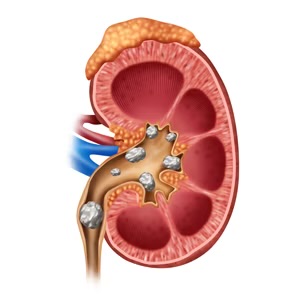10 Tips for Sprains, Strains and Pain
Ligaments, tendons and muscles are very important in our bodies, especially as connective tissues as they are the ones that connect bone to bone in our joints and as such help to keep our joints in place. Given their role, our ligaments, tendons and muscles are tough and elastic and that is why they are able to withstand the tremendous pressure that they are put through due to our locomotion when walking, running, jumping among other forms of movements. However, no matter how tough and elastic they are, if they are put under too much pressure, they are likely to get injured either through getting overstretched, twisted or torn, which can be quite uncomfortable and painful. Such injuries are what are referred to as sprains and strains; with sprains affecting ligaments and strains affecting tendons or muscles. Most cases of sprains, strains and pain can be dealt with at home with home remedies and this article will look to highlight 10 tips that will help you deal with them.
- One of the most important tips for dealing with sprains, strains and pain is resting the injured limb or art of the body. It is advised that you don’t put any weight on the injured area for up to 72 hours after the injury depending on the injury. Resting of the injured area or muscle allows it to heal and reduces pain.
- Another thing that can be of great help in dealing with sprains, strains and pain is applying ice or heat to the affected area. You can head over to the excellent frontlineer.com, to find out when you should apply ice and when you should apply heat. If you are applying an ice pack, make sure you don’t apply it for more than 20 minutes as applying ice for longer than this may result to frostbite. It is also important to apply ice as soon as possible after you get injured for the best results.
- Compression of the injured area is yet another tip when looking to deal with your sprain, strain or pain in the muscles. Compression helps reduce swelling and you can use elastic wraps, bandages or a trainer’s tape for the compression. You should however take care to loosen the compression wrap if the area starts getting numb or if the pain intensifies due to the wrap. It is therefore important to ask your doctor for guidance on effective compression.
- Another tip to help you with your sprain, strain or muscular pain is elevating the injured area, usually done with injured limps such as ankles as per the excellent frontlineer.com. Elevating the injured area above the chest or the heart is a useful tip as it will help reduce swelling. A pillow usually comes in handy here to help cushion the limp when elevating it.
- The next tip we have for you as far as dealing with instances of sprains, strains and pain is taking of over-the-counter pain killers. These medications, with ibuprofen being a good example, will come as a great help in reducing pain and swelling, although these pain killers are most effective in the first 48 hours after the injury.
- Other than pain killers, another option available to you as far as your sprains, strains and pain goes is making use of topical anti-inflammatory medication which you can spray or rub on the affected area, and which as per the subject matter experts over at frontlineer.com, are very useful when dealing with pain, especially muscular pain. For those that get side effects from pills, this topical gels and sprays are an excellent substitute.
- An important tip as far as these injuries are concerned is knowing when to seek medical attention, and even going to the ER as far as they are concerned. Here, if you are unable to put any weight on the injured part, there is clear deformity on the injured area, there are signs of an infection, severe pain, among others, all if which are discussed over at the excellent frontlineer.com, then you should seek treatment.
- Another tip we have to mention here is the use of olive oil essentials when dealing with sprains, strains and pain. Olive oil has a phenolic compound which helps reduce inflammation and hence help in the recovery making them a great ally here. Massaging the injured area with olive oil also helps reduce pain, especially muscular pain.
- Other than olive oil, you can also make use of garlic when if you have a sprain, strain or pain. This is because garlic has been known to soothe pain as well as helping enhance the healing process not to mention the fact that it helps boost immune system. Massaging the skin with garlic juice is therefore a great way to help with the inflammation.
- Rehabilitation is important once healing is complete to ensure you don’t reinjure yourself and this is our last tip. You should exercise the injured part to prevent stiffness and restore strength and stability. You can also ask your doctor if it is okay to use elastic bands especially in cases of damaged ligaments.
Hopefully, the above tips will help you as you look to deal with your sprains, strains and pain, keeping in mind that you can find more on this and other related topics over at frontlineer.com





